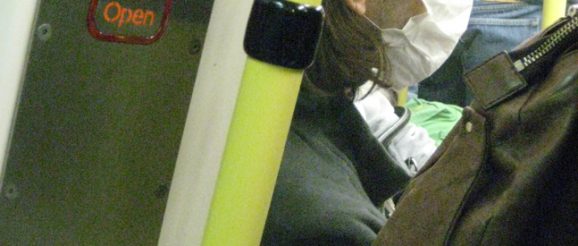To face mask or not to face mask? Covid etiquette is an experiment in human behaviour – Paul Ormerod

To mask or not to mask? Along with scores of other things we never would have anticipated, whether or not to cover up our nose and mouth is the latest thorny issue in Covid etiquette.
The answer from Boris Johnson is clear: in public spaces such as transport, bars, restaurants or other busy indoor places, we should wear a mask.
But in some parts of the country, the Prime Minister might be losing this particular battle. Substantial numbers of people in both London and Manchester were not masking up last week, after the Government edict to wear them was was dropped.
The Manchester Mayor Andy Burnham and London Mayor Sadiq Khan have continued to keep mask rules in place on public transport.
Mr Burnham crafted what appears to be a brilliant PR statement for the Manchester city region, where he won in every single ward in the May elections: “This is a city-region built on doing the right thing by each other, and that will be demonstrated by continuing to wear our face coverings.”
Yet on a crowded tram, I felt like the man in the famous Bateman cartoon with my mask on, without any others in sight.
The Prime Minister has inadvertently set up an interesting natural behavioural experiment. The last twenty years have seen an explosion in the number of scientific papers published on how behaviours and ideas either spread across human networks or, after an initial burst, just fade away.
The basic premise is simple: in any given context, either you wear a mask or you don’t. The force behind this so-called binary choice is the subject of thousands of mathematical articles.
Of course, in the real world, this is blurred. The same person may wear a mask in a crowded store but not wear one when going from the door to the table in a spacious restaurant, they might put one on in a busy pub, but not in an almost-empty supermarket.
The immediate incentives around wearing masks are weak, they give little protection to the wearer, they rely instead on collective buy-in. The inconvenience in terms of time an effort to put a mask on and take it off are trivial.
Even the altruistic motives for wearing one are not overwhelming. Scientific literature has cast doubt over the efficacy of masks and how much protection they give to others. Much depends on varied factors such as the type of mask or how it is worn.
For some, mask wearing has become a political exercise: Rugged individuals who resist the nanny state or caring, sharing liberals.
But both of these are confined to the minorities. For the most part, people are guided by social influence, what others are doing. The more that masks are seen to be worn, the more likely others will conform. Equally, as they are discarded, the social pressure to wear them is weakened.
In the science of networks, there is a tipping point which will determine our mask etiquette; the proportion of people who wear masks may fall gradually and then, suddenly, this behaviour spreads. Only the hard core of wearers are left, in the same way that most Remainers have accepted the result of the Brexit vote and only the ultras cling to the faith.
Once again, the government risks being on the wrong side of public opinion, not as expressed in opinion polls but in actual behaviour.
